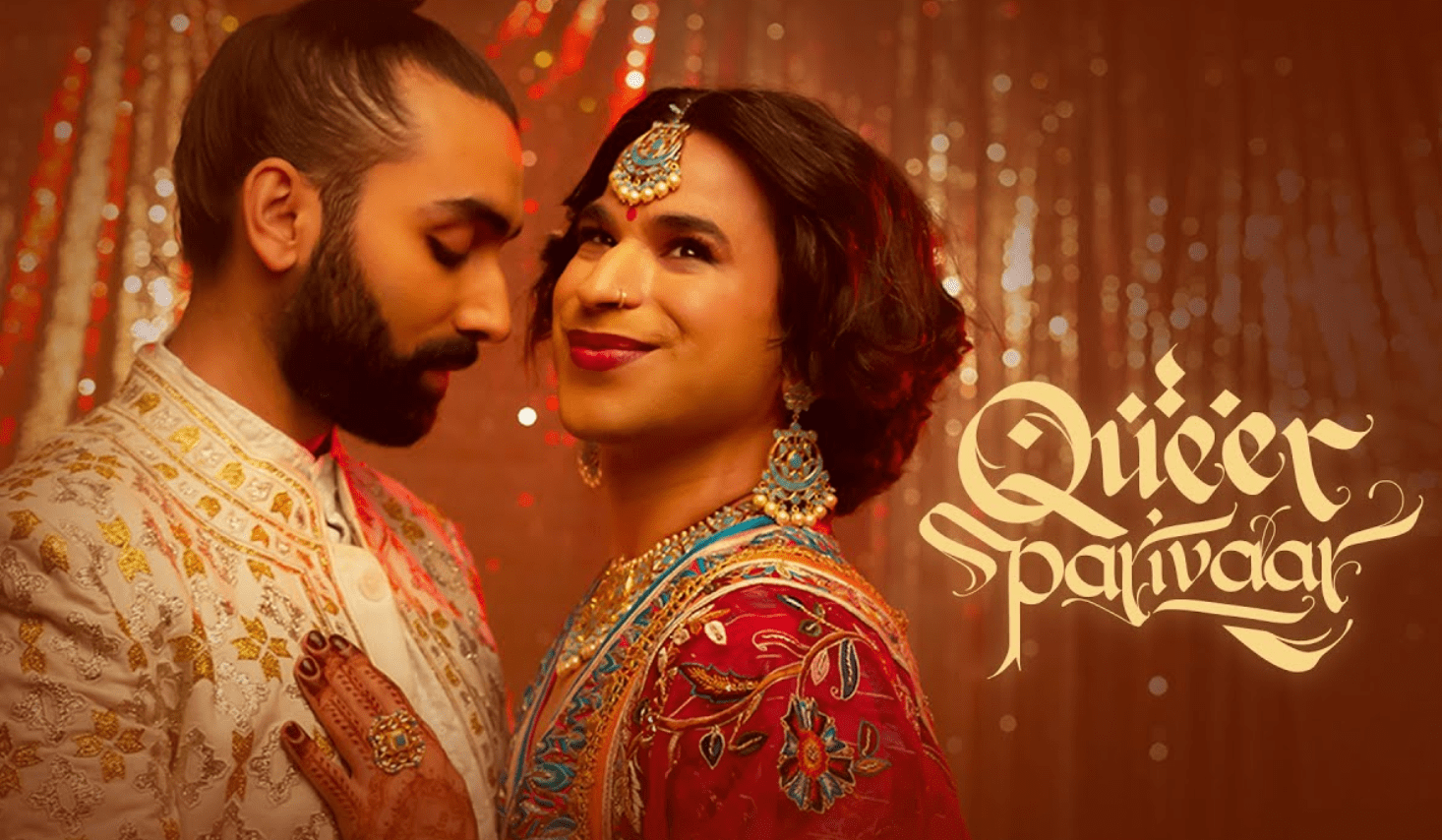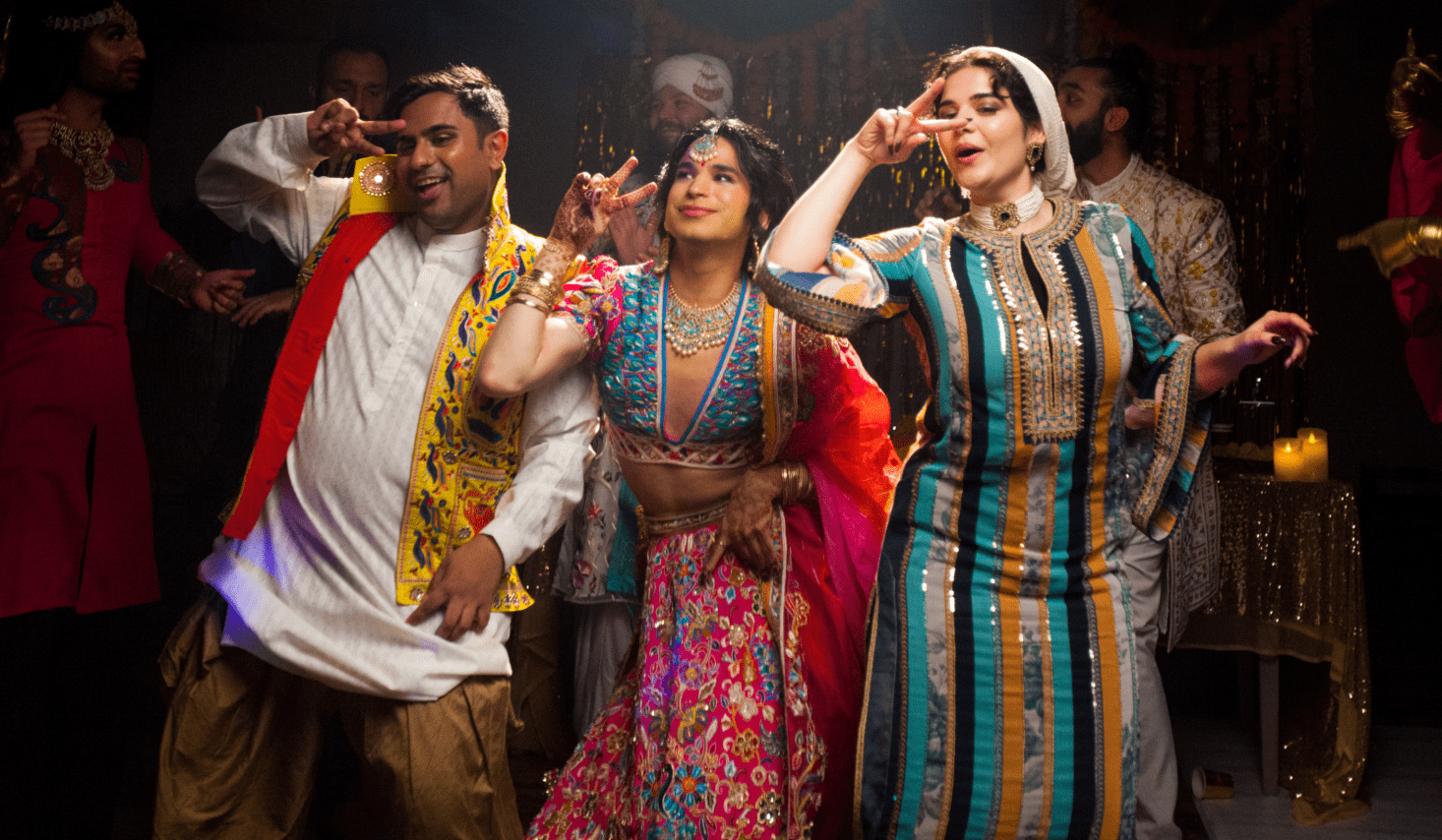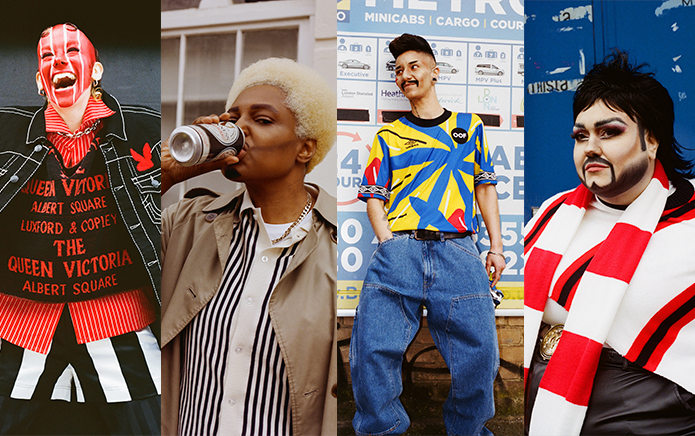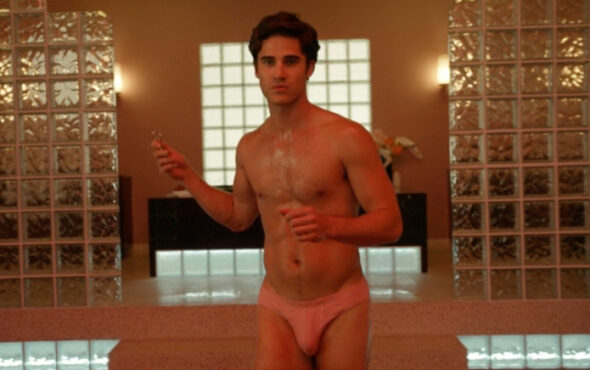
It’s a Monday evening in Brixton and some of the most famed faces of the queer South Asian scene are making their way into a discreet cinema screening room. It’s the official cast and crew screening of Queer Parivaar – a powerfully heartfelt short that examines what it means to be family. Queer Parivaar is a film project that has been sensitively mastered by Shiva Raichandani and producer Huma Qazi over the course of two years. Together, the pair transformed their passion project movie idea into a nuanced emotional movie that made its mark at this year’s BFI Flare Film Festival.
Both Raichandani and Qazi, with their respective backgrounds and LGBTQ+ identities, understood the duty of making a South Asian queer film that encapsulated the nuances of LGBTQ+ joy and pride. And so, Queer Parivaar effortlessly comes together as a powerful story that resonates with different generations, identities and people to make them feel seen and understood.
With the BFI Flare Festival wrapping up and Queer Parivaar seen and embraced by audiences, GAY TIMES caught up with creator and project lead Shiva Raichandani to hear more about their experience making the film, its emotional impact, and platforming the South Asian community.
Shiva, hello! We’ve just seen the emotional premiere of Queer Parivaar. Now you’ve had time to process it all. How are you feeling?
I still haven’t processed everything, but the cast and crew screening was such a good reminder of how important this was and really acknowledge the amount of effort and love that was put into the film. It was very affirming to see everyone come with genuine support for one another and champion everyone’s talents – that was nice to see. We don’t really get to see people come together in spaces that are unique where it’s community-led, community-built and driven, which was really nice to see. So, I’m reeling in from those kinds of emotions and deeping how important these moments are and now to have it given out to the public is very exciting.
From its initial pitch to its premiere, you’ve been working on Queer Parivaar for over two years. How does it feel to finally have a finished film?
I don’t think I could have ever imagined it to be the way it is right now. Initially, it was this personal passion project and it’s not something that official media companies, organisations would finance. We didn’t want to go through that traditional route of finances, because you lose agency and control of the story that you’re trying to tell. We didn’t want to be micromanaged by anyone that would take away the true essence of what the film would be and bring to the community. We wanted to crowdsource it and have [people] really rally behind it in whatever ways they can. We even had community members come in and collaborate with us where if you donate a certain amount, you get this gift. It was so humbling to see that demand that people actually want this.
We set this target to reach a certain amount of money and our now exec producer, Huma, reached out and wanted to be a part of it. A lot of our queer narratives tend to be sidelined or be reduced to caricatures that didn’t really have actual substance or value. So she came on board and suddenly everything became real. We didn’t anticipate the pandemic so we had to step back and rediscover ourselves in the process. A lot of it changed, but I’m really grateful for the time we got to create something that we are proud of and it still holds through the essence of the vision that we had but in a renewed way.

Your film features an array of LGBTQ+ identities both in the film and behind the scenes. How important was it for you to have that LGBTQ+ inclusivity in all spaces?
Oh hugely! If I was to open this opportunity, these doors, I had to bring everyone with me. In so many ways, this was how I wanted to give back and there’s so much incredible queer South Asian work being done in the UK, but it’s very rare for opportunities to come together in all departments. So it was a nice way to bring everyone together and create over 120 jobs across the globe. It was very important for me to get people across the board from different age groups, different backgrounds, different ethnicities within the South Asian diaspora and have a space for them to bring their own artistries to the table. If we’re not going to create those opportunities for ourselves, it’s hard to rely on others to do that for us as well. It was very important to not just create job opportunities and to bring people into the room, but to allow them the creative freedom to practice their art. I learned a lot and was inspired by the people around me, so it was a very, very collaborative healthy environment to be creating art in.
Queer Parivaar looks a lot at Queer Family. A lot of people in South Asian communities face difficulties with their families when they come out because of cultural and religious taboos. How do you hope Queer Parivaar changes this culture?
[Queer Parivaar] was a nice way for us to sit and meditate on what we consider family and to see there is so much love and community to be found outside of the heteronormative nucleus family unit. There’s so much out there in the world that can provide that sort of nourishment for us and it’s nice to tap into that sort of discourse. I grew up in a very religious conservative family and we didn’t have the language or vocabulary to address queerness so it’s been a journey for all of us. But, in that process, I didn’t find feel safe enough to rely on them. I found family online, in media, in films, and trying to see aspects of myself through Bollywood. I found community and family online, which happens to most of us. That then translated to physical, chosen families so there’s no one way to define a family. In terms of this film, you’ve got these two people who were forced into a marriage of convenience, but still love each other which transforms into them moving on, finding that independence, holding that family and then having a grandchild who didn’t fit that stereotypical family. It deals with how we all come together with different generational gaps to find a different kind of family.
Queer Parivaar will be available for audiences to watch via the BFI Flare player. Why should GAY TIMES viewers watch this film?
The film has a very specific cultural presence and a lot of universal themes in terms of how does one authentically be themselves or navigates life in a way that feels true to them. There are so many things that you can take away from the film. There’s something to resonate with everyone, whether it’s the music, the visuals or whether the storylines speak to you. Many of these themes are universal, but through a cultural filter which is also nice because it invites people to learn about experiences outside of their own. Sometimes queer people of colour and queer South Asians have compounded effects of experiences because of their layers of identity that further marginalise them. [Queer Parivaar] is a nice way to acknowledge that and appreciate the cultural difference there. There’s a vibrant tapestry of South Asian talent and that is different and you don’t really get to see that. As long as someone feels something at that moment then it’s already a big thing for me because that’s all you can do. You hope to create something that people can connect with in whatever way. I think there’s something for everyone, no matter what age! It’s a beautiful display of solidarity and community.
You can watch the official trailer of Queer Parivaar here or below.



